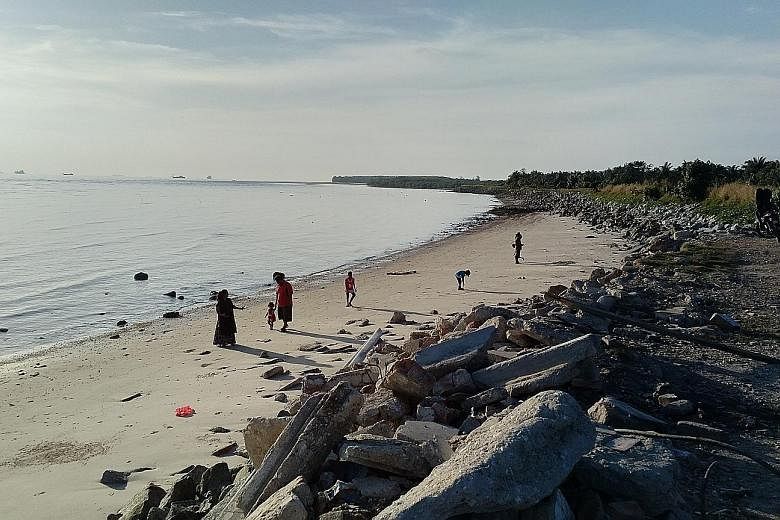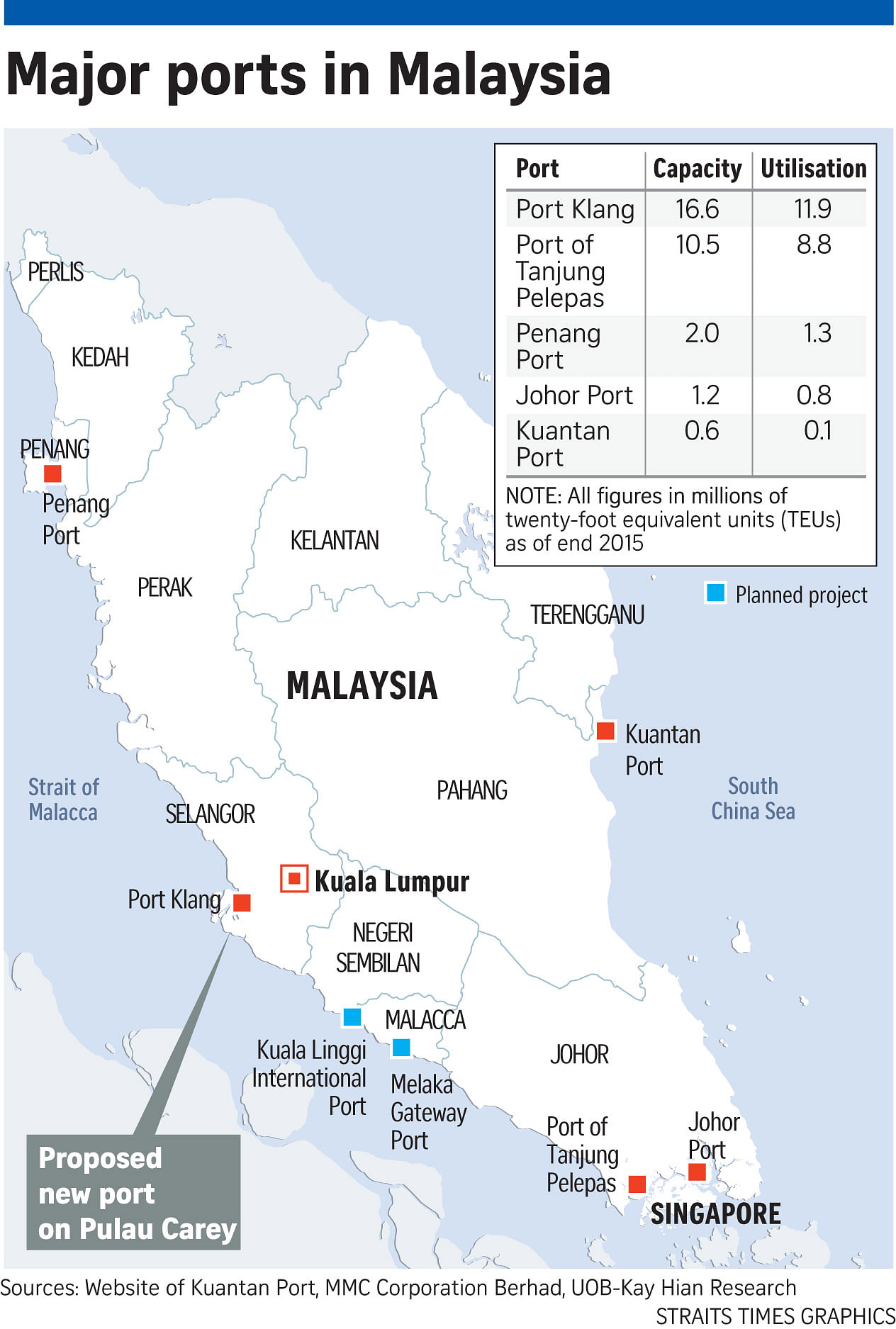Malaysia's Port Klang Authority (PKA) wants to build a giant port on an island next to the country's largest port, clashing with plans for two big ports coming up in nearby Malacca, about a two-hour drive away.
The RM200 billion (S$64 billion) project mooted by the PKA will be built on Pulau Carey, which, at 13,000ha, is about 25 times the size of Singapore's Sentosa Island.
PKA chairman Kong Cho Ha said a new port is necessary to compete in the industry and also to vie for a bigger share of the container cargo trade from Singapore, The Star daily reported yesterday.
Officials have also said that Port Klang, the largest in Malaysia, is reaching its maximum capacity.
Some analysts question the need for a new port, especially one intended to compete with Singapore.
"Creating another port that runs separately does not make sense. That is just bringing about excess capacity," said Mr G. Durairaj, managing director of maritime and logistics consultancy PortsWorld.
A World Bank report commissioned by the government in 2015 said a new port on Malaysia's west coast is not necessary, as existing facilities have yet to reach capacity, according to sources.
Mr Durairaj said that a new port in Selangor would have only a "minimal impact" on Singapore's shipping sector.
Analysts see little chance that a new port would draw clients away from Singapore, pointing to factors such as critical mass and customer loyalty incentives.
They also note that current ports in Johor, which are closer to Singapore, have not managed to make too big of a dent, adding that the global container-shipment industry has reached a plateau.
On the other hand, having several Malaysian ports situated close to one another along the Malacca Strait would lead to them eating into one another's pie. "There will be excess capacity in a competitive environment, and that will eat into the current market share," Mr Durairaj told The Straits Times.
The movers behind the Pulau Carey project are past and present ranking members of the Malaysian Chinese Association (MCA), which is part of the Umno-led Barisan Nasional coalition. Tan Sri Kong is an MCA member and former transport minister. The Chinese-based party owns a majority stake in The Star.
Transport Minister Liow Tiong Lai, who is MCA president, proposed last year that China invest in Pulau Carey's deep-sea port. He revealed that talks were in place between his ministry and the China Merchants Group.
A Chinese investor for Pulau Carey's port would fit into the big picture of China's One Belt, One Road initiative, Affin Hwang Capital's analyst Aaron Kee said.
"They (China) have an interest in safeguarding the trade flow and to bypass Singapore," Mr Kee said, adding that China's stake in Kuantan Port and involvement in building the East Coast Rail Line would indicate an interest in Pulau Carey as an extension of Port Klang.
But just 86km south is the RM12.5 billion Kuala Linggi International Port in Malacca, which is expected to serve the oil and gas industry. It got the go-ahead to begin construction in the first quarter of this year.
Then there is Melaka Gateway, 126km from Pulau Carey, a project costing RM43billion and involving energy giant PowerChina International. There are plans to build a deep sea port and a cruise terminal.
Experts say new ports sprouting in Malaysia as growth plateaus could mean only one thing.
"I won't rule out a migration of activities. They have to contend with intra-port competition," said Mr Durairaj.


